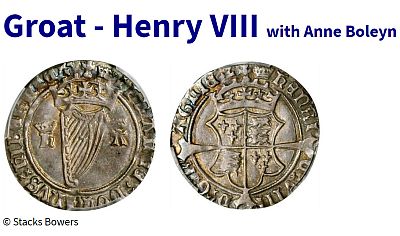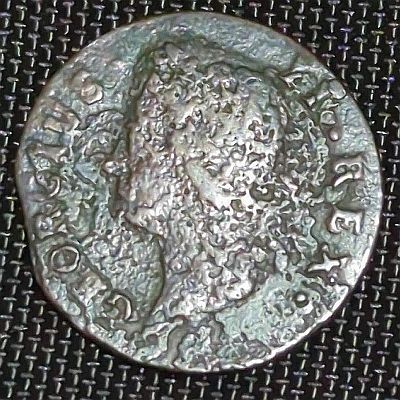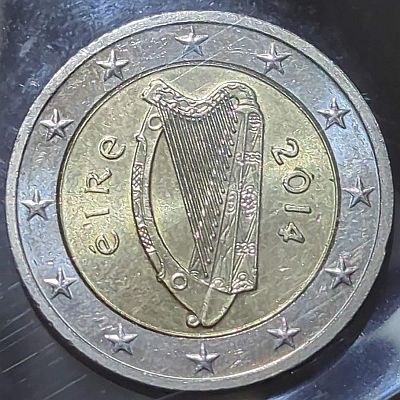My main piece for this article is somewhat worn and well used. But, like so many pieces, it has such a fascinating tale. In particular today, I went exploring the Irish harp.
Ireland has long been associated with the harp. “In April 1185, not long after the Norman invasion of Ireland, Prince John arrived in Waterford for a year-long tour of the country.” Although not impressed with the Irish overall, he was enamoured by their harp playing: “For their modulation on these instruments, unlike that of the Britons to which I am accustomed, is not slow and harsh, but lively and rapid, while the harmony is both sweet and gay… It must be remarked… that both Scotland and Wales strive to rival Ireland in the art of music.”
Likely earlier, but certainly since Prince John’s accounts became known, the harp became a national symbol of Ireland.
In 1744, when my farthing was produced, it was well entrenched on Irish coins:

The text above the harp reads “Hibernia”. In ancient Celtic, the name of the place was “Iveriu”, possibly meaning land surrounded by water. Being further north than much of the rest of the Roman Empire, the Romans called it Hibernia or sometimes Invernia, meaning “Winterland”.
When Henry VIII declared himself King of Ireland in 1541, he upgraded Ireland’s status from a lordship to a kingdom. As a result, the country’s own unique coinage was introduced and it featured a harp topped with a crown Image courtesy Numista:

Henry VIII’s example features a regular harp surmounted by a crown. Mine is somewhat worn, but has an extra detail – it is a female, or winged maiden harp. Romanticised as the female personification or Erin (Ireland), it is therefore to Ireland, similar to what Brittania is to England.
More than that, not only is the female harp symbolic of Ireland, but also of her struggle for political independence. Since that Norman invasion I started this piece with, Ireland and England have had an intertwined and complex relationship. My intention here is purely to expand a little on the history of the symbolism, rather than the politics.

The obverse of this 1744 farthing features George II, King of Great Britain and Ireland. Completely unrelated to this piece, George II was the last British King to lead his troops in battle in 1708 at the battle of Oudenarde (he was a prince at that point).
Finally, what of Irish coins today? They still feature the harp, albeit back to a regular instrument now:



Leave a Reply